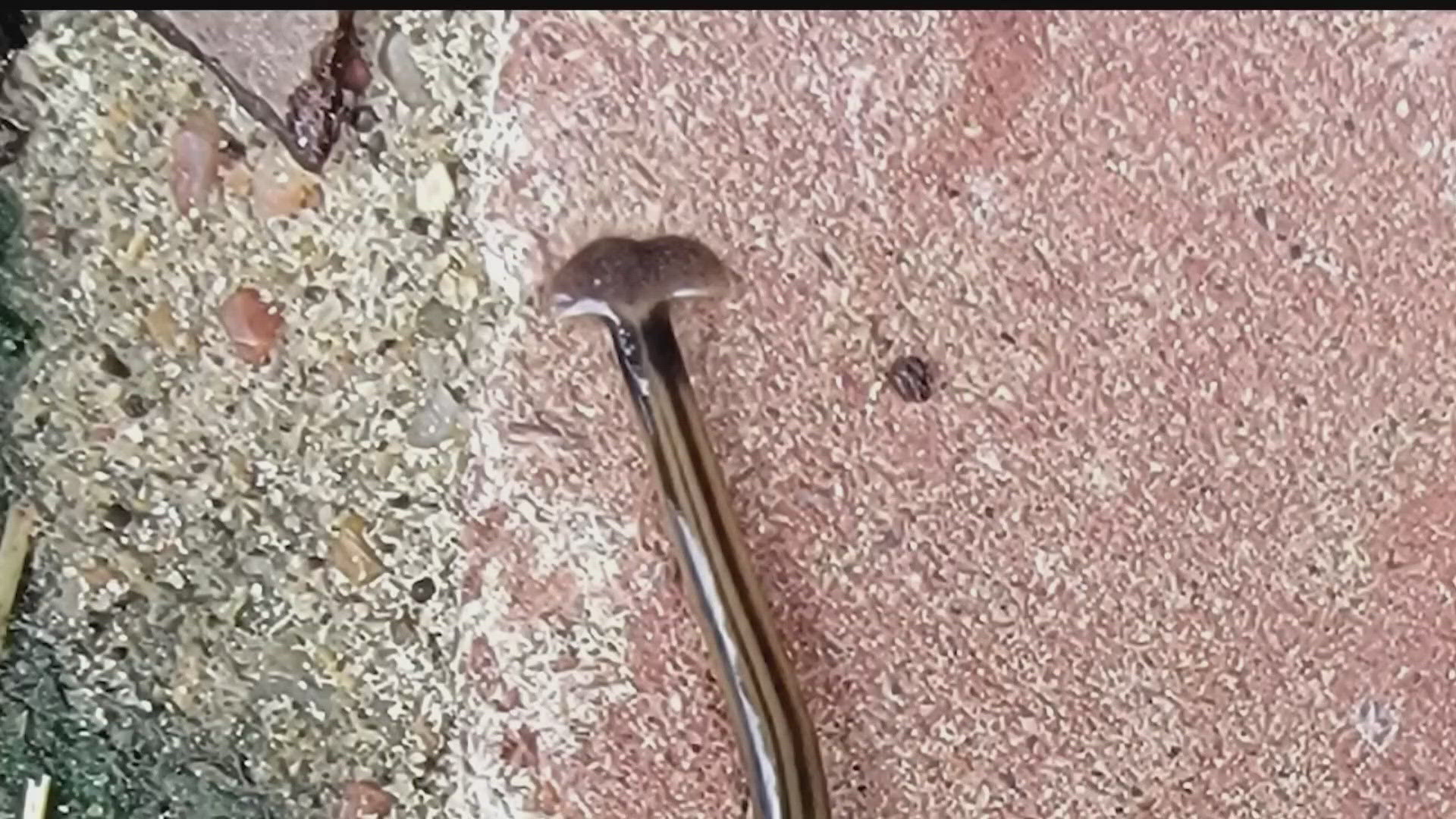KNOXVILLE, Tenn. — Invasive hammerhead flatworms may soon start trying to reclaim Tennessee gardens as the temperature rises.
According to the Tennessee Valley Authority, hammerhead flatworms are named after their distinctive half-moon head shape. The Texas Invasive Species Institute said these worms are typically a light honey color with one to five dark spots along its body.
"The body is 'snake-like' being up to 15 inches long (usually 8-12 inches) and very narrow," the institute said.
The invasive worms are not native to the U.S., but are believed to have arrived from Southeast Asia in the soil of nursery plants in the early 1900s, TVA said.
"The invasive, snake-like creatures may be seen during wet summer weather as they seek hot, humid environments.," TVA said.
According to TVA, like most invasive species, they cause problems for the natives in the area.
"The worms are carnivorous and feed primarily on earthworms and other soil-dwelling invertebrates that are beneficial to the overall health of soils," TVA said. "By eating native earthworms, the hammerheads reduce the quality of the soil."
If earthworms were to be removed from the environment then most plants, crops and trees would not be able to get the nutrients they need in order to survive, TVA said.
The biggest issue in the battle to get rid of these slimy creatures is the incorrect disposal of the worms. Cutting these worms will do more harm than good because they can regenerate, according to the TVA.
"People are concerned about them. They're unusual and they aren't used to seeing them," said Karen Vail previously, a professor and UT Extension urban entomologist. "You shouldn't chop them up with a hoe because each body part left behind will regenerate another hammerhead worm."
"The best way to get rid of one is to completely cover it with salt or rubbing alcohol, or use gloves to place it in a bag and freeze it," TVA said.
Hammerhead flatworms are most likely to spread through landscaping soil and nursery plants, so TVA advises gardeners to keep a close eye when placing new plants in the soil. TVA also advises those dealing with the worms not to touch them with their bare hands, as they secrete toxic slime that can cause skin irritation to humans and even carry parasites.
"They can also be sprayed with a combination of citrus oil and vinegar; or just vinegar alone and it must be applied directly on the flatworm," the invasive species institute said. "Placing them in a Ziploc bag with salt or vinegar ensures the flatworm does not crawl away after treatment; then dispose of the sealed bag."

